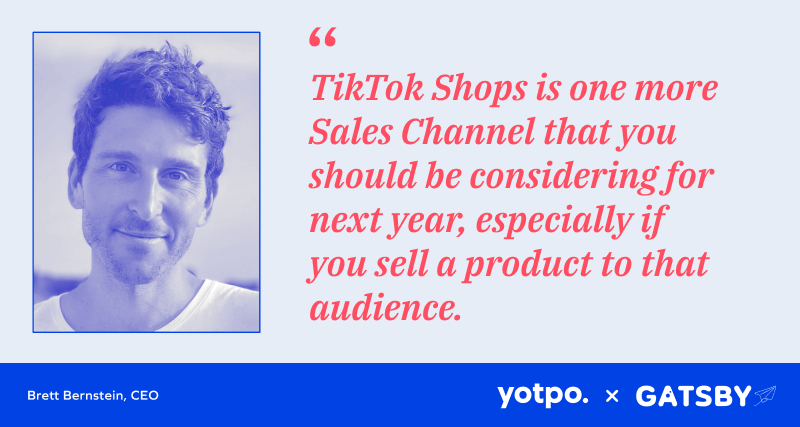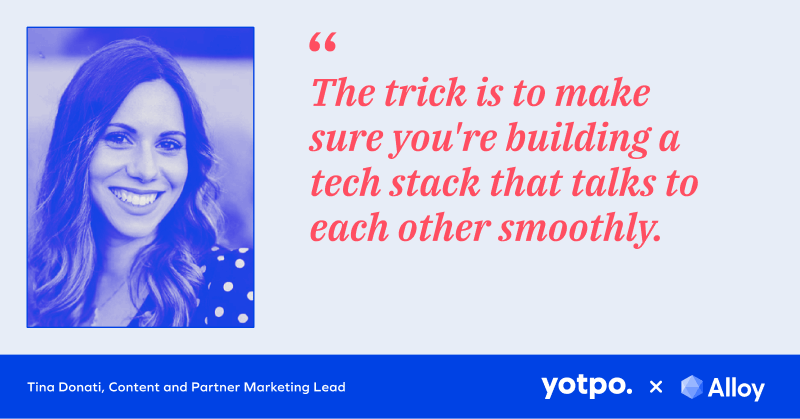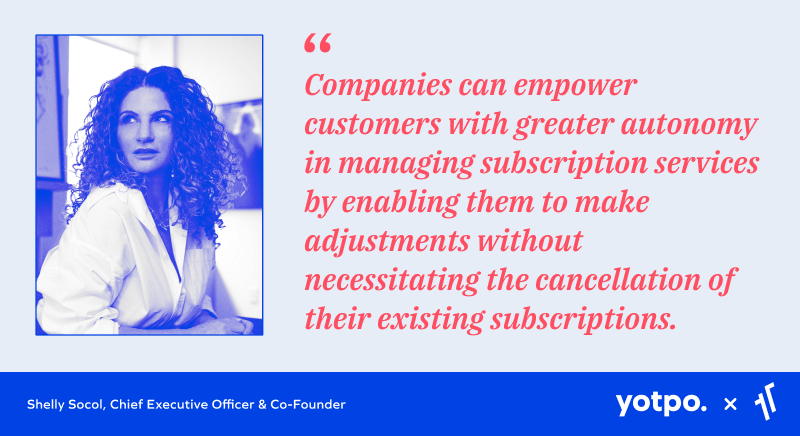The eCommerce landscape is ever-evolving, with new trends and technologies continually reshaping the way businesses operate and consumers shop. As we approach 2024, it’s crucial for DTC brands to stay ahead of these changes to keep up with customer expectations and maintain a competitive edge.
To help you do that, we asked experts in the eCommerce industry what the biggest trends will be in 2024, and to give us tips to capitalize on them. From predictive personalization to AI analytics, here are the most important trends to keep an eye on.
1. TikTok Shop is primed for experimentation
In 2023, TikTok Shop made its grand entrance, hinting at a shift in the way consumers, particularly the Gen Z demographic, discover products. But, it’s still very early days for the new commerce engine, and brands are still learning what works, and what doesn’t.
Modern Retail reports that BK Beauty saw initial net new sales of about 10% to 20% from transactions on TikTok Shop, while a New York-based food client of Digishopgirl Media has seen an incremental rise in sales of up to 15% after testing Shops for over six months.
While these aren’t earth-shattering figures, it signals potential to tap audiences that otherwise might not make it out of the platform to purchase, and brands will heavily test their strategies in TikTok Shop in 2024.

For example, BK Beauty saw their numbers jump once they mixed their offering with content creators. They saw a 30% jump in sales from TikTok Shop thanks to a video by makeup artist Melissa Murdick. It seems the combination of the in-app shop and TikTok’s affiliate program can yield notable results.
“TikTok Shops is one more Sales Channel that you should be considering for next year, especially if you sell a product to that audience,” explains Brett Bernstein, CEO at Gatsby, an app that lets brands automate their social ambassador program. “If you’re using Shopify, consider making it a new year’s resolution to link in more Sales Channels in 2024, especially TikTok, Instagram, and the Shop App. These channels make it easier to discover and convert new customers.”
2. Authenticity will combat social-scam concerns
It’s not all good news when it comes to social commerce. According to a recent Retail Dive report, 60% of US shoppers are ready to shell out $100 on a product they find on social media — but over half of them (53%) admit they’re finding it harder to trust products sold through those channels.
And this isn’t just an issue for the older generation; 52% of Gen Z and Millennials feel the same way. Most of them (63%) avoid buying through social media due to worries about scams, and 57% are uneasy about sharing their checkout information. They’re also wary of counterfeit or low-quality products (55%).
So while spending on TikTok and other social platforms is on the rise, so is the amount of, well, junk. There are a lot of cheap products designed to appeal to specific niches, and as a genuine DTC brand, you need to ensure that your products don’t get mistakenly lumped into this group.
Brands that invest more in their social commerce offerings in 2024 will also work hard to convey trust and quality, too, so that new shoppers aren’t wary of taking a chance on an unfamiliar brand. For that reason, authenticity and real customer reviews will be important ways to establish trust in 2024, bringing UGC and testimonials even deeper into social platforms.
3. Customer service will get direct
If shoppers are interacting with your brand on social media, then they’re going to want to slide into your DMs, too. In fact, there’s a growing trend of shoppers preferring to reach out directly to customer service through DMs or texting. A study by Intercom found that 60% of U.S. customers prefer businesses to communicate via text and DMs, and HubSpot’s consumer trends report showed a 45% year-over-year increase in social media users that have sent DMs to get customer service.
It stands to reason that this trend will only grow as social shopping becomes more accepted, so in 2024, customers will likely demand more of this real-time communication with brands — and they want it to happen wherever it’s most convenient for them.
Adopting technologies and new processes that allow your customer service team to interact via DM or texting will be an essential strategy going into the new year. And the potential payoff for doing so is huge; according to Webex, 72% of customers are more likely to buy online if they can ask questions in real-time.
4. Personalization gets predictive
It’s no secret that personalization is important in eCommerce, but customer expectations are becoming more complex. According to the Salesforce State of the Connected Consumer report, 65% of customers now expect companies to adapt to their changing needs and preferences.
Brands can’t stop at just a static understanding of their customers; it’s not about who your customer was yesterday, but instead who they will be — and what they will need — tomorrow, next week, and every other moment in their journey with your brand.
And the stakes are pretty high, too. That same report shows that 80% of customers say the experience a company provides is as important as its products and services.
Predicting your customers’ behaviors though can be complicated, as it requires robust data from all touchpoints — which is often scattered across platforms. “The trick is to make sure you’re building a tech stack that talks to each other smoothly,” Tina Donati, Content and Partner Marketing Lead at Alloy Automation, explains.
In 2024, brands will do just that, consolidating their tech stack where they can and ensuring that connections between their software is seamless.

“Integrations between your commerce platform and your ERP system, CRM, marketing automation, helpdesk, loyalty app, etc. are the only way to make it easy to personalize customer touchpoints without a lot of manual work from your team,” Donati says. “This is why tools like Yotpo, Klaviyo, and Gorgias consistently lead their markets; they have a vast number of integrations that merchants rely on, making their products more effective in driving business growth.”
5. Sustainability expands into reusable packaging
According to McKinsey, sustainable and recyclable/reused/reusable packaging is one of the four packaging trends predicted to grow through 2024. And despite increasing inflation, there’s a growing consumer demand for such sustainable packaging. In the coming year, we expect to see more brands explore sustainable packaging options, reducing environmental impact while also deepening their connection with customers.
A company called Boox, for instance, is aiming to make shipping more circular and sustainable by offering reusable packaging for brands, aiming to eliminate single-use packaging from the DTC world. Moreover, some brands are taking it a step further by making the products themselves refillable or reusable. Saltair, for example, encourages customers to reuse plastic pumps for their beauty products, offering refills without the plastic.
Brands that want to introduce these reusable options should market them in a way that both motivates customers and creates positive sentiment. Introducing this mission to your loyalty program rewards structure, for example, can raise awareness while also encouraging participation through incentives.
6. Consumers expect value to combat inflation
Even if value isn’t a pillar for your brand, consumers are expecting it going into 2024. According to Retail Week, about 74% of shoppers expect retailers to lower their prices to reflect any increase in inflation in 2024. This signals that consumers are becoming more price-conscious, and brands may need to find ways to offer value while keeping prices competitive.
Value, however, can come in many forms — quality service and free perks, for example, can elevate a brand that cannot rely on discounting.
7. Subscriptions need to come with perks
Amid this inflation, DTC brands are offering discounted subscription plans as a way for customers to save money on the goods they want. As a result, the subscription eCommerce market is currently projected to grow beyond $450 billion by 2025, up from $15 billion in 2019. In 2024, we expect to see subscriptions become a more heavily marketed value exchange for customers that are seeking to get the most for their money.
But as many brands know, if the only value you offer is monetary, it becomes easy for a customer to bounce once a cheaper option comes along. We expect to see more brands offering perks and convenience with their subscriptions, to keep customers hooked.
So what do customers actually want? Control over their subscriptions and rewards. “Companies can empower customers with greater autonomy in managing subscription services by enabling them to make adjustments and modifications without necessitating the cancellation of their existing subscriptions,” says Shelly Socol, Chief Executive Officer and Co-Founder at 1r Agency.
Consider letting customers manage their subscriptions via text, for example, or making it easy to earn and redeem rewards for their regular orders.

Or bring personalization into subscriptions as well, as 1r did for hair and skincare brand, Function of Beauty. They developed a personalized portal for subscriptions that encourages customers to fine-tune their formulas, such as adapting their hair goals from achieving volume to combating frizz, and incorporating newly introduced ingredients and fragrances.
Not only will these strategies improve customer stickiness, but the combination of flexibility and value makes it easier for brands to also upsell and cross-sell more effectively, too.
8. Short form video educates shoppers
Short-form video might have been popularized by social media, but the quick and entertaining format is fast becoming a preferred way for younger consumers to learn about products, regardless of where they’re shopping. A report from Influencer Marketing Hub lists producing short-form videos as one of the top content marketing trends for 2024.
As a result, many brands are leveraging these videos to better showcase product details and increase social sharing, and the format is ideal for branded, influencer, and user-created content. From quick product demos to behind-the-scenes peeks, these engaging videos are a great way to keep customers hooked and boost conversions.
9. Cross-sell takes center stage
Retention is no longer just about repeat purchases; it’s about product expansion — getting customers to try more products and categories. If you’re able to fulfill multiple needs for your customer, they are more likely to remain loyal to your brand.
As a result, product adoption is one of the most commonly cited goals from brands that use Yotpo, and for good reason — our data shows that for DTC brands across all verticals, the number of products per customer is just 2.4. A major pillar of retention strategies in 2024 will be growing this number.

One way to accomplish this is to perfect the many touchpoints that lead to a repeat purchase. Smart A/B testing will allow brands to “complete the customer retention journey,” says Anya Geimanson, Co-founder & CEO, Visually.io. “They can achieve this by leveraging customer data and feedback, and conduct A/B tests on every experience to fine-tune conversion rates and average order values.”
“By offering personalized recommendations, post-purchase upsells, enticing incentives, and precisely targeted campaigns, brands can inspire exploration and purchases in new product categories,” she continues. “This comprehensive approach ultimately leads to enhanced customer retention and a larger share of their wallet.”
10. AI opens the door to optimization
AI and automation are becoming increasingly important for eCommerce brands, helping them tackle tasks that free up time for brands to innovate and strategize. For instance, some brands are using AI to create images and product descriptions, allowing them to show the product in multiple contexts without a massive photoshoot.
Up until this point, brands have leaned heavily on AI to streamline production tasks like this. But in 2024, we expect more and more brands to rely on AI and machine learning to analyze customer data and predict behaviors, allowing them to create more tailored marketing strategies that yield stronger results.
“Using the right tools in the right context can be really helpful in working smarter, but the current value of AI is from its insights, rather than the content itself,” explains Jason Stokes, CEO and Founder of Eastside Co, an award-winning Shopify agency.

Meta, for example, launched its AI Sandbox that lets brands iterate and optimize their creative at lightning speed, resulting in a reported 17% improvement in cost-per-action and 32% improvement in overall ad spend. IBM also offers AI that allows brands to track and evolve their messaging using customer response, and Yotpo recently announced Tailor AI, a retention expert that can analyze your customer and performance data, and make recommendations for ways to improve.
All of these insights will inform human-made decisions to build a stronger brand. Stokes believes that brands should “think of AI as a personal assistant that can automate time-consuming tasks, but the quality, depth, and detail still need human input.”
Staying agile to meet 2024 trends
2024 promises to be an exciting year for eCommerce, with social platforms reshaping product discovery, increasing customer expectations for personalized experiences, the continued rise of subscriptions, a shift in retention metrics, and the growing importance of AI and automation.
By staying informed of these trends and implementing the strategies suggested by experts, DTC brands can stay ahead of the curve and thrive in the evolving eCommerce landscape.



